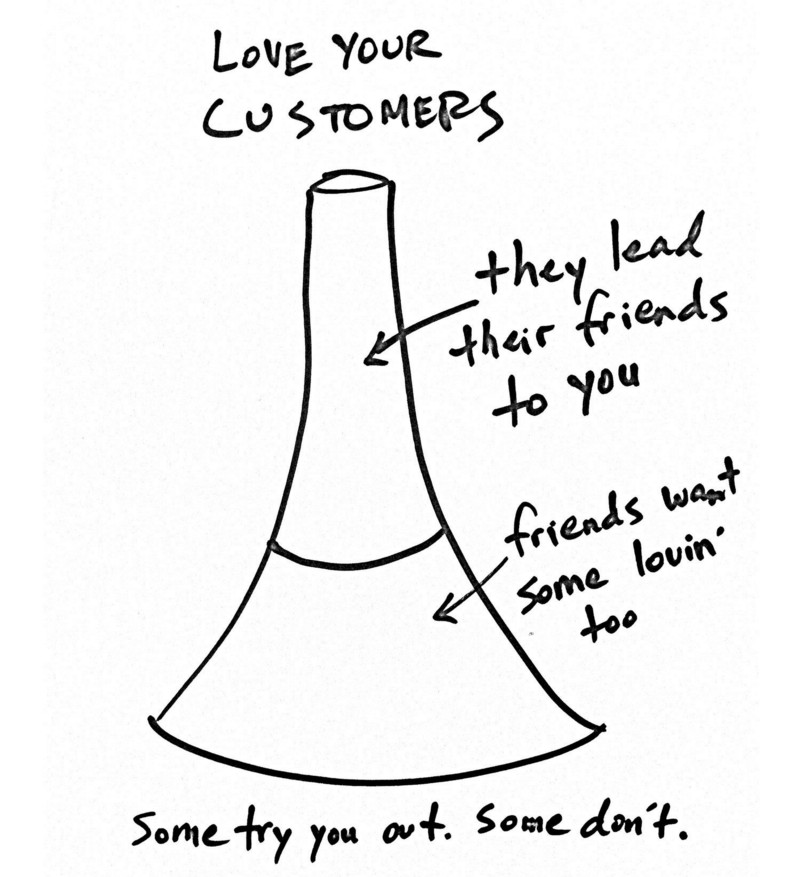Lets start with a brief history lesson.
In the beginning…
…there was the INTERNET.
If you wanted to take advantage of this awesome new frontier — you just had to get a website. There wasn’t much competition — so getting traffic was fairly easy and your website didn’t need to be awesome — in fact many were terrible.
Build a simple website — sell some stuff and you were onto a winner 🙂
Then…
…came the competition. So the next big trick was CONTENT MARKETING.
Yes, if you wanted to stand apart from the competition and get that all important web traffic you needed a BLOG. And lets face it, we live or die by our traffic.
Once you started a blog, Google thought you were awesome.

Google was hungry for fresh information and rewarded those who provided it.
Even simple blogs could get you traffic. You could become a blogging superstar overnight. Add a shop to your blog or a blog to your shop and hey presto — a business.
Unfortunately…
…the rest of the web then went and got themselves a blog.
The times when content marketing would make your business a success and bring you loads of traffic disappeared.
You see, each time the competition increases, it forces those who want to succeed, to up their game.
The previous ‘keys to success’ become the new ‘cost of entry.’
It’s not that you can skip what went before, but you need to push the boat out one step further and be innovative.
Next…
…came SOCIAL MEDIA.
Oh how we hate — sorry, I mean love social media. At first, for most businesses it was a curiosity. They didn’t see the point. Social media was a place for posting your holiday photos — right?.
But it quickly became a necessity.

If you want traffic, you must go to where your potential customers are hanging out and give them some VALUE.
And VALUE is a key word here. Social Media can be used to help your customers, answer their questions, solve their problems, communicate quickly and generally make their life a little easier.
But boy can it be time consuming and guess what — everyone is doing it now.
So what’s next on the escalation ladder?
Enter….
Growth Hacking.
It’s the new phrase being bandied about, especially in Tech circles. First coined in 2010 by Sean Ellis.
Growth hacking is essentially the process of optimising your sales funnel. It’s about trying to find the small things, that when added together can make a big difference.
It’s focus is refining. Doing exciting things like A/B testing and other related experiments. It’s also about psychology. Getting those leads and finding out what it will take to squeeze some money out.
Here’s a tamed down version of a diagram you’ve probably seen before. Ali Mese used a variant of it in his excellent article. It’s a bit harsh but it gets the point across. A growth hacked sales funnel is a bit like this…

Doesn’t look particularly good for the customer does it?
Now, let it be known that I’m NOT against improving your website to make it easier to use and more helpful to the customer. Nor am I against using data to improve your customer acquisition.
But I have a BIG problem with the general Growth Hacking approach or maybe its the mentality that I dislike.
Why?
Because it is ultimately SELF serving rather than CUSTOMER focused.
Growth hacking is about me. How can I make more money from the customer, how can I grow my business — how can I get rich quicker.
This I believe is the opposite of HOW a good business should think. I use the word “how” deliberately.
I once had a boss who would set a financial profit target every year — nothing wrong with that of course. But that was IT, there was no plan as to, “why” the customers should choose to give us their business, rather than the competition. His eye’s were on the money — not the customer.
Think about this. Why should the customer buy from you? WHY?
The customer is not interested in making you rich — no no no. They are not interested in knowing that you have hacked the most optimized sales funnel and your A/B test shows the “BUY NOW” button should be the colour blue. Seriously, they don’t care about this.
Here’s a little secret: the customer wants VALUE and they want to deal with people they can TRUST. They want to work with people who believe in what they are doing and that genuinely CARE about them — the customer.
Having a good website gives value. Blogging done well can give value. Even social media, again, if done correctly will provide value for your customers. Growth Hacking alone does not.
How about this approach…
Start by LOVING your customers. Even if you only have ONE. Instead of being self serving — be CUSTOMER serving. Focus on treating your customers like the gold they are.
If you don’t have any customers yet, love the people who you want to become your customers — give them VALUE. Because you care, genuinely care and want to help.
My personal belief is that success in this overcrowded connected world will increasingly rely on referrals. Customer to customer referrals.
Enter Ben Chesnut’s alternate diagram.

Quality will eventually set the winners apart from the also rans. Social Media still plays a role here, as does the growth of messaging platforms.
Customers are looking to each other to inform them of what services they should use.
I believe that the next stage up the ladder is making great products that customers love. Giving VALUE, building TRUST and actually CARING about your customers.
This may lead to a slower pace of growth. But that is OK, as the trade off is that it’s likely to be a longer lasting growth.
It also forces you to be innovative and focus on the BIG picture.
As we grow our small WordPress Support company, WP Hero, this is the approach we are taking. Focusing on the CUSTOMER experience. When a customer experiences our service, I want them to WANT to tell their friends.
As a relatively new company, our resources are often limited and I would much rather invest in building a great service and doing a great job, than hacking the colour of our homepage and I can testify that our customers appreciate it too.
Share This Post


